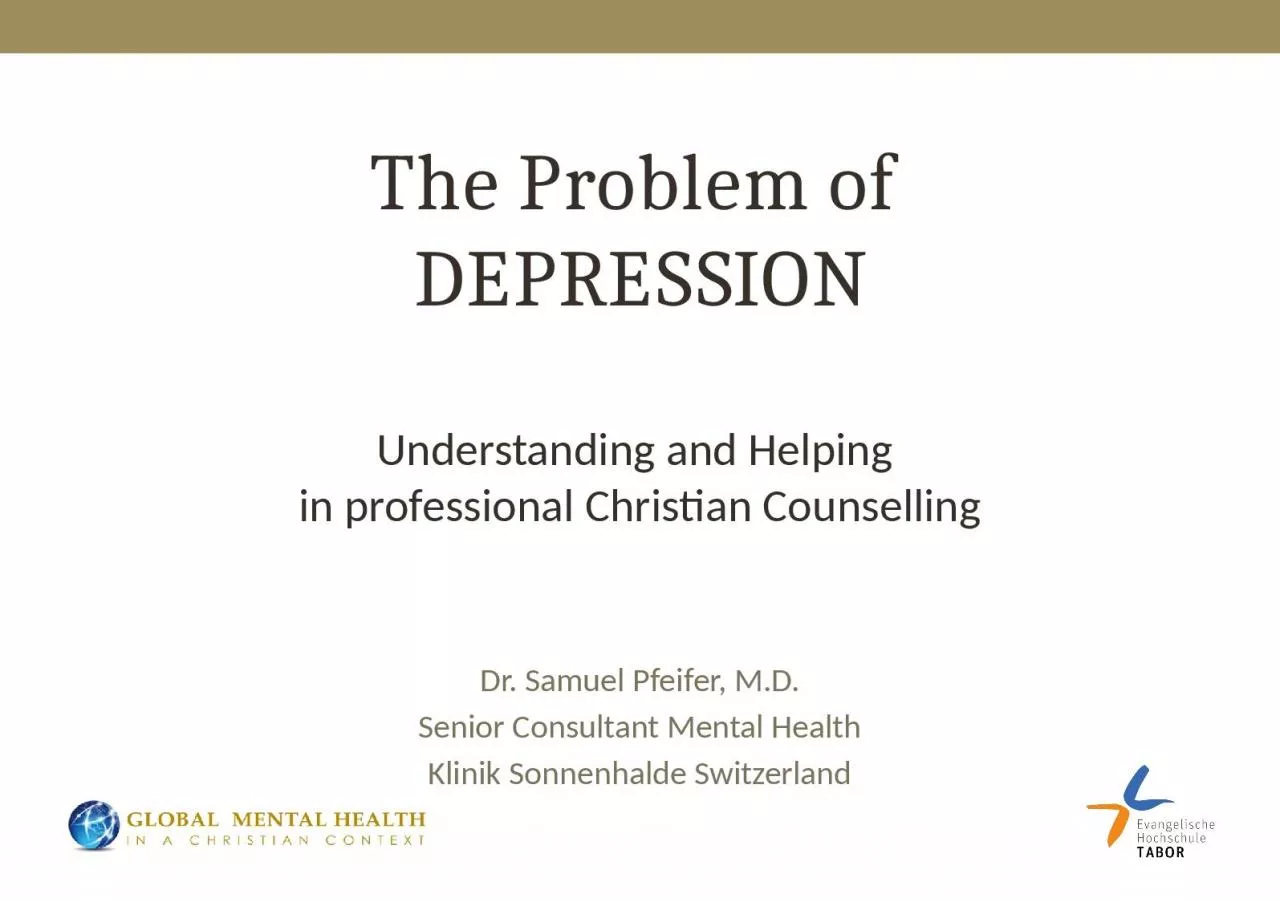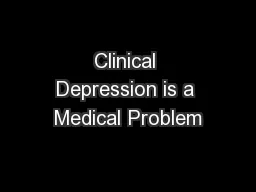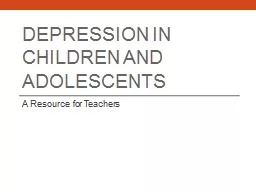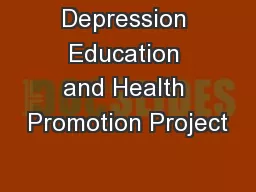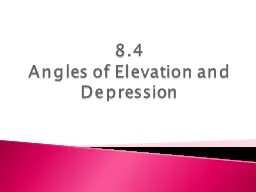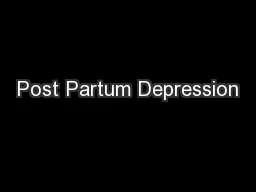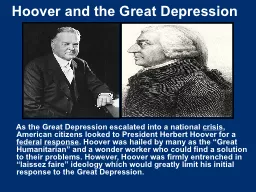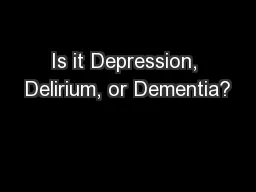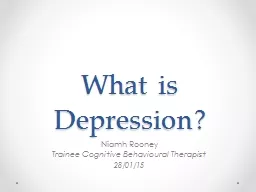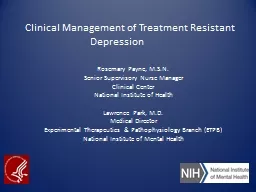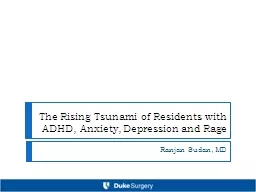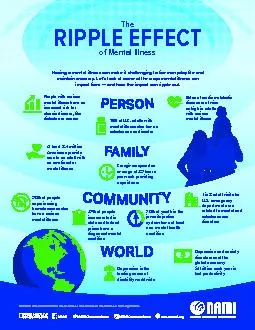PPT-The Problem of DEPRESSION
Author : BlueberryBelle | Published Date : 2022-08-04
Understanding and Helping in professional Christian Counselling Dr Samuel Pfeifer MD Senior Consultant Mental Health Klinik Sonnenhalde Switzerland Mental Health
Presentation Embed Code
Download Presentation
Download Presentation The PPT/PDF document "The Problem of DEPRESSION" is the property of its rightful owner. Permission is granted to download and print the materials on this website for personal, non-commercial use only, and to display it on your personal computer provided you do not modify the materials and that you retain all copyright notices contained in the materials. By downloading content from our website, you accept the terms of this agreement.
The Problem of DEPRESSION: Transcript
Download Rules Of Document
"The Problem of DEPRESSION"The content belongs to its owner. You may download and print it for personal use, without modification, and keep all copyright notices. By downloading, you agree to these terms.
Related Documents

